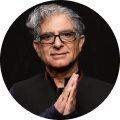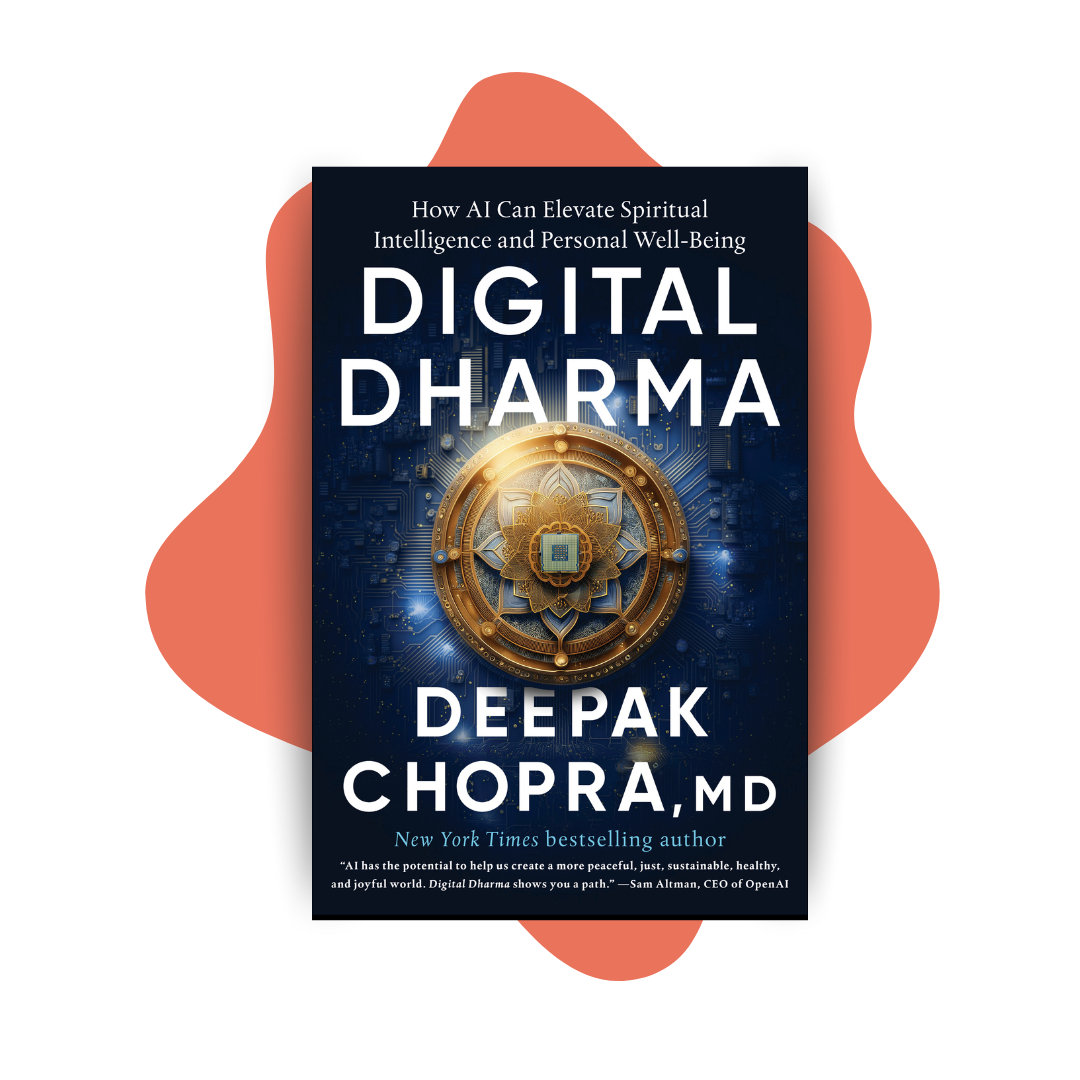Can You Ever Choose to Be Whole?.
When your mind and heart are truly open abundance will flow to you effortlessly and easily.
Wholeness is considered to be very desirable in many settings from holistic health to whole foods. Where the meaning of wholeness becomes an issue is in terms of inner or spiritual growth. There, wholeness is set as the goal for anyone who wants to get out of separation, duality, the divided self, the illusion of Maya—in other words, there is a broad range of usages for wholeness. Becoming a whole person is held out as a viable and valuable project.
What these various applications have in common is that wholeness is seen as a choice, and therein the problem lies.
If you are talking about whole foods versus processed foods, wholeness is certainly a choice, and the same can be said for a holistic approach to well-being and medicine. But speaking about a whole person is somehow different. Becoming a whole person is wrapped up with the most fundamental questions about what it means to be human. This goes beyond being an optimist or pessimist about human nature, beyond trying to be a good person or the best self you can be. Human consciousness is open to unlimited possibilities: we can take any viewpoint we want towards our own existence.
At the most basic level, each of us decides how to relate to reality. In the modern era society teaches us to relate to reality through scientific, rational, logical means. Yet this runs afoul of the entire subjective world, which obviously exists—everyone is aware of sensations, visual images, sounds, thoughts, flashes of memory, etc., which occur “in here.” This entire realm of human existence cannot be turned into data or quantified. You cannot assign a number to an insight, intuition, creative idea or spiritual experience. As soon as reality “in here” and reality “out there” are separated, wholeness becomes impossible.
Why do we assume that the world “out there” is real in the first place? There is a reason for ancient spiritual traditions to see the physical world as a beguiling illusion. Here, I am using “illusion” in the most common sense of the word, the way a magic trick or a dream is an illusion. Imagine that you are dreaming one night, and inside your dream you can use numbers, measure things, and even pursue science. Obviously, the ability to do these things would reassure you of the reality of your dream. But once you wake up, all the counting, measuring, and doing science would become instantly irrelevant.
Do you think this example doesn’t apply to the waking state when you aren’t asleep? It does. To burst the illusion created by accepting the physical world at face value, here are a few facts about the nature of a basic property of Nature, namely, light.
- Photons, the elementary particles of light, are invisible and have no brightness whatever.
- Light has two incompatible states, as a particle and a wave. Both can be measured, but how one state turns into another is a total mystery. We can only observe that it happens.
- Color as a perception cannot be explained. Why red is red has nothing to do with its frequency or wavelength, any more than the sweet taste of sugar is explained by counting the carbon atoms in a sugar molecule.
- The visual images you see in your mind’s eye cannot be explained by examining the brain. The brain’s visual cortex has no pictures in it; indeed, it is totally dark and devoid of light.
I hope you are surprised to learn these facts. What ties them together is one thing: consciousness. Your consciousness gives light its brightness and color, creates images in your mind’s eye, and experiences the world as a theater of events in time and space. Decades ago the eminent British physicist Sir James Jeans declared that the universe was beginning to look much more like a great thought than a great machine. Mind-like behavior has been spotted in the action of elementary particles, as noted by the prominent physicist Freeman Dyson.
If the universe isn’t a product of cosmic consciousness—indeed, if existence isn’t the same as consciousness—science is totally unable to explain how consciousness came about. There’s no point at which atoms learned to think. The sugar molecules in your brain are barely distinguishable from the sugar in a sugar you spoon into your morning coffee. Physical explanations for mind are the ultimate apples and oranges mistake.
You cannot get to “in here” from “out there.” Only when the subjective and objective worlds are united will we be in contact with reality. Once the separation between “in here” and “out there” is healed, wholeness is automatic, because it has always been that way. Reality is wholeness, but we won’t experience this until we are whole. You might suppose that relating to reality through the subject-object split is the only way. If so, then aiming to be a whole person would be futile. Wholeness by definition lies beyond any kind of split or fragmentation. How do we actually get there?
The first step is to accept that your own awareness is open-ended. The second is to realize that you are complete, because whatever is open-ended has access to unlimited possibilities. You cannot bring human potential to an end or nail it down with a system either religious or scientific. There is always the unknown, unpredictable possibility of a new and unexpected thought. That’s the source of our greatest human gift, creativity.
But it is also the source of our suffering. The unpredictable mind is intimately tied to the uncontrollable mind, which afflicts us with guilt, shame, doubt, hostility, anxiety, and depression. Those afflictions give evidence enough that we cannot confront the subject-object split with a shrug of “So what?” Being whole matters more than anything else. Accepting the divided self as normal, we lose our connection to wholeness. To reconnect, we have to exchange the subject-object split—the very thing that placed us in separation—for a new relationship with reality.
Let’s say that you accept the terms of this argument so far, or if you don’t, let’s say you have other reasons for believing that wholeness is worth attaining. How would you get there? What would it feel like? Might you not be better off with your present life, warts and all, than pursuing some chimera? The answer to all of these questions is the same: they are the wrong questions. They presuppose that wholeness is a choice when in reality it isn’t.
Wholeness is everything. It is the One, the All, or Brahman, as it was known in Vedic India. Being whole, it cannot be accepted or rejected. It cannot be lost, either. To choose wholeness is like saying “I chose not to exist yesterday, but I have decided to exist today.” Another implication, which will surprise almost everyone, is that you cannot relate to wholeness. There can only be a relationship between two separate things, and wholeness has no separations, no divisions, no “this and that,” no “yes or no.”
As a result, wholeness offers only the possibility of choiceless awareness. In choiceless awareness you experience yourself as whole, which is to say, as pure existence and pure consciousness. You still accomplish the things you ordinarily do in the world—you go to work, meet deadlines, take the family on vacation. But at bottom your experience is seamless and unified. I realize that choiceless awareness sounds arcane if not impossible. We are so used to relating to reality through the subject-object split that everything is a matter of A or B. Countless choices fill our lives.
In the bigger picture, however, these choices have not made human beings happier, wiser, or more certain about who we are and what our place is in the universe. Indeed, no ultimate questions have been solved, which is the legacy of separation. We peer into reality like children with their noses pressed to the window of a candy store. This isn’t the place to detail what the journey to wholeness actually is (for that, please see my book, Metahuman, which is devoted to escaping the illusions we live by), but the road to wholeness begins by knowing what’s at stake: a complete shift in how we relate to reality.
J. Krishnamurti referred to this as the first and last freedom. The vision of wholeness gets you on the path; the same vision supports you along the way; and it stays with you after you realize that you are whole. There could be no first and last freedom if the journey was a straight line, or if it had any divisions, including a beginning or end. Wholeness, which is what you are, cannot depart from itself, lose itself, or come back to itself.
There is only the process of waking up to reality. From there, the possibility of higher existence opens up. From any other starting point, I think the illusion created by the subject-object split will endure.
DEEPAK CHOPRA MD, FACP, FRCP, founder of The Chopra Foundation, a non-profit entity for research on well-being and humanitarianism, and Chopra Global, a whole health company at the intersection of science and spirituality, is a world-renowned pioneer in integrative medicine and personal transformation. Chopra is a Clinical Professor of Family Medicine and Public Health at the University of California, San Diego and serves as a senior scientist with Gallup Organization. He is the author of over 90 books translated into over forty-three languages, including numerous New York Times bestsellers. His 91st book, Total Meditation: Practices in Living the Awakened Life explores and reinterprets the physical, mental, emotional, relational, and spiritual benefits that the practice of meditation can bring. For the last thirty years, Chopra has been at the forefront of the meditation revolution. His latest book, Living in the Light co-authored with Sarah Platt-Finger. TIME magazine has described Dr. Chopra as “one of the top 100 heroes and icons of the century.” www.deepakchopra.com

